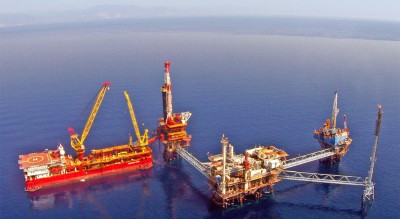News


CATEGORY: Environment
LOCATION: Greece, Romania
START/END: 2017
CLIENT: GSP Offshore SRL
ORIGIN OF FUNDING: GSP Offshore SRL
PROJECT VALUE: 26000
LDK’s BUDGET SHARE: 100%
STAFF PROVIDED: 3

Type of Services
LDK was contracted to carry-out a RoMH document for the offshore drilling installation of GSP Jupiter rig. The services were rendered in accordance with the requirements of the Offshore Directive (2013/30/EU), its approximation into the Greek legislative framework through L. 4409/2016 (GG 136/28.07.2016) and the subsequent work plans agreed by the project team. These regarded the preparation of the RoMH document, with special focus on:
- Analysis of Directive 2013/30/EU guidelines on the preparation of the report.
- Hazards’ identification following the rig’s ISO 17776/2002 checklist and bow-tie diagrams.
- Barrier and control measures’ identification following the rig’s bow-tie diagrams.
- Preparation of risk matrices.
- Identification of SECEs following the identified major hazards (HAZOP, HAZID and REIA studies).
*Hazard and Operability (HAZOP), Hazard Identification (HAZID), Risk and Environmental Impact Assessment (REIA).
Description
The Report on Major Hazards (RoMH) is a document prepared for the non – production drilling installation of GSP Jupiter, aiming to demonstrate that all major accident hazards have been identified and that adequate control measures have been put in place in order to reduce the risk of a major accident to an acceptable level [in accordance with Articles 12 and 13 of Directive 2013/30/EU].
GSP Jupiter is a rectangular floating MODU equipped with four (4) hydraulically powered, electrically controlled, legs. In operation, the MODU is towed to the drilling site where the legs are lowered to ocean bottom and pre-driven to provide a firm footing. The hull structure is elevated on the legs to the prescribed height above the water surface for drilling operations. The erection procedure is reversed for moving off the drilling location.
The identification of major hazards of GSP Jupiter which could result in a major accident have been assessed through the following methods:
- Review of hazard materials and activities;
- Hazard and Operability (HAZOP) study;
- ISO 17776/2002 checklist on expected hazards;
- Historical accident data;
- Design review.
The risks from Major Accident Hazards (MAHs) were assessed qualitatively and some were further assessed quantitatively. Bow-tie diagrams and risk matrices were prepared for all identified MAHs of GSP Jupiter, including the incorporation of control measures on the initially assessed risks.
According to Directive 2013/30/EU, Article 2 (33), ‘Safety and Environmental Critical Elements’ (SECEs) were determined as preventive and mitigation measures (barriers) for all identified risks of the installation. The purpose of which was to prevent or limit the consequences of a major accident, or the failure of which could cause or contribute substantially to a major accident
The final Verification Scheme (VerSc) of GSP Jupiter was intended to ensure the independent and competent scrutiny of GSP Jupiter, which is provided as measures to manage the risks from MAHs, fire and explosion, emergency response procedures and those elements which are considered to be critical to the environment and safety.
Concerning the GSPM policies, they have the objective that all activities related to the company business will have an acceptable and as low as practical achievable risk, towards occurrence and effects of hazards both to persons, environment and the equipment











